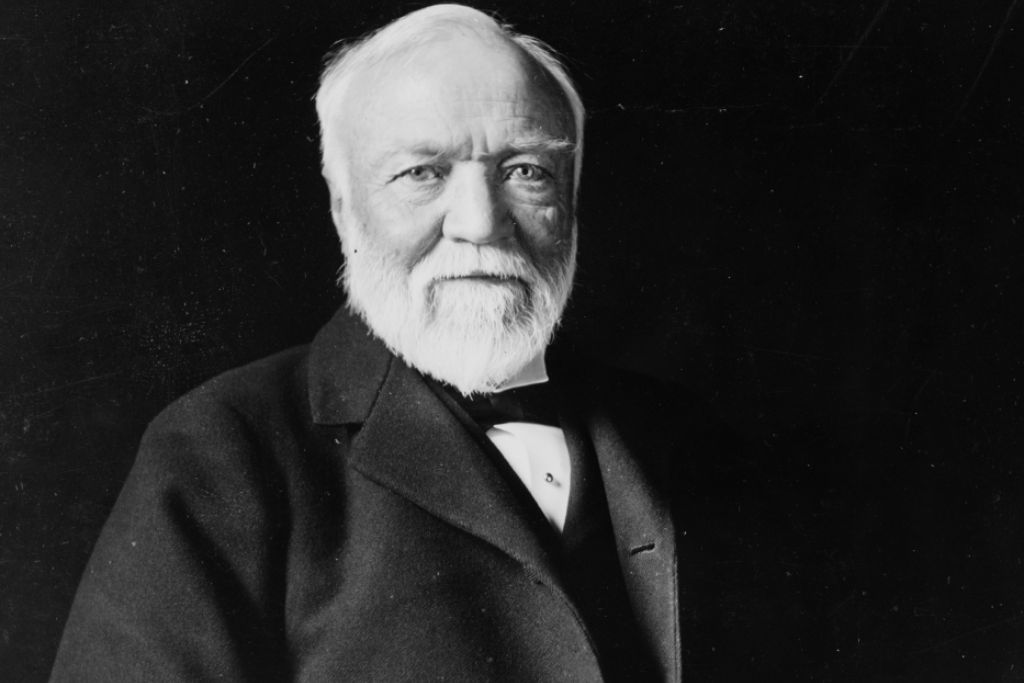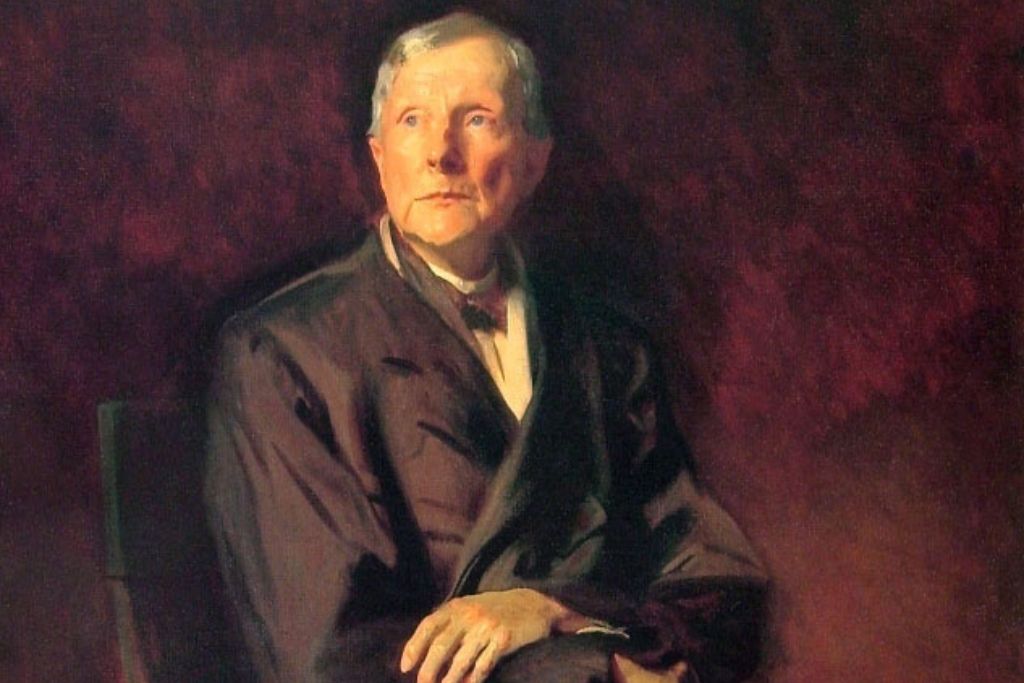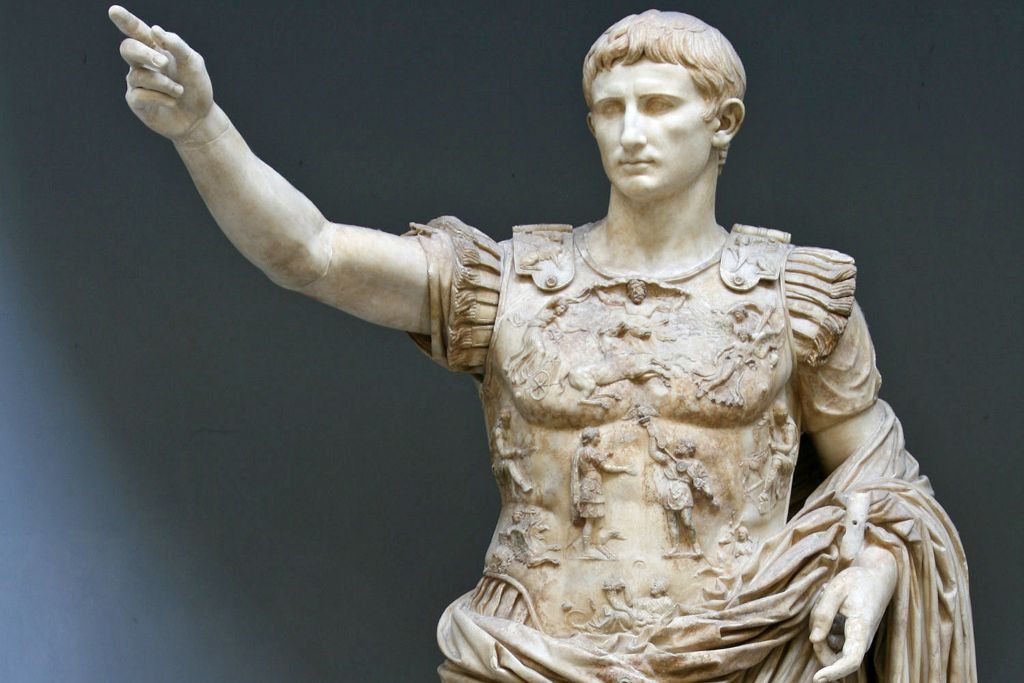
Today, we see billionaires like Elon Musk, Bill Gates and Warren Buffett who seemingly have immeasurable wealth. But what if I told you that their wealth is nowhere near the wealth of the richest people to have ever lived!
Currently, Jeff Bezos is the world’s richest man, with a net worth of about $190 billion (although this is expected to increase drastically in the coming years). He’s rich by pretty much every measure, and he’s not even on this list…
15. Nathan Mayer Rothschild – $250 Billion
Today, the last name “Rothschild” is synonymous with wealth and power. After all, the Rothschilds are among the richest families in the world, having been so for the past 250 years.
By far the richest of them was Nathan Mayer Rothschild, who had a net worth of $250 billion…
Just like his father, Mayer Amschel Rothschild, Nathan Mayer Rothschild was a prominent banker, having founded the British branch of the Rothschild banking family (one of only two branches which is still around today!)
From childhood, the five Rothschild siblings had been groomed to become successful bankers. Upon becoming adults, they were sent to the five major finance capitals of Europe: Frankfurt; Vienna; London; Naples and Paris.
As the third son, Nathan would be sent to London, initially making his money in the textile industry, before moving into the securities exchange business, where he’d deal primarily in gold and coins (much like his father had back home in Frankfurt).
Here, Nathan would make enough to money to make Bill Gates cry. However, the bulk of Nathan’s money would be made during the War of the Seventh Coalition, which saw the Duke of Wellington face off against Napoleon at Waterloo.
In anticipation of a British loss, the British stock market almost collapsed. However, the Duke of Wellington soon won at Waterloo, defeating Napoleon.
This news, however, took a long time to travel, with Nathan Rothschild knowing the outcome of the war before the British government did!
Seeing this, Nathan Rothschild bought millions of pounds worth of stocks, bonds and gold whose prices had all collapsed due to the battle.
When the government announced the victory, these stocks and bonds skyrocketed in value, netting Rothschild billions in only a few hours!
14. King Croesus I of Lydia – $345 Billion
Unless you have an affinity for Greek history, chances are that you’ve never heard of King Croesus. If you have, you’ll know that his name was often used as a proverb for wealth in antiquity (Ancient Greece and Ancient Rome).
As the oldest son of King Alyattes of Lydia, Croesus had always been groomed to become his father’s successor. As with many rich kings of his time, Alyattes had several illegitimate children as well as his legitimate ones.
Upon his father’s death in 561 BC, one of Croesus’s half-brothers became a rival claimant to the throne, raising his own army against his half-brother, plunging Ancient Lydia into a state of virtual civil war.
Eventually, Croesus would come out on top, defeating his half-brother and his allies. With this victory, Croesus would be crowned King Croesus I of Lydia, inheriting one of the largest empires of its time.
Using his newfound powers as king, Croesus would strip the nobles who had sided with his half-brother, of their land and wealth.
Much of the land Croesus took was valuable farmland, which Croesus would continue to directly own until his empire crumbled in 546 BC.
In fact, King Croesus was so rich that he invented modern coinage! He was the first monarch to start minting coins made of precious metals, in his case, small coins made of electrum (alloy of gold and silver).
13. Cyrus The Great – $350 Billion
Whilst Croesus is the one that’s often remembered for his immense wealth, another one of his contemporaries was similarly one of the richest people to have ever lived. And their wealth is somewhat intertwined…
Born as the eldest son of King of Anshan, Cyrus was groomed from birth, to take his father’s place. At the time however, the Kings of Anshan were vassals to much more powerful king, the King of Media.
Upon assuming the throne, however, the Median Kingdom was in a state of civil unrest. This unrest allowed Cyrus to forgo swearing fealty to the King of Media, and instead conquer his vast kingdom.
Over the next few years, Cyrus would conquer the neighboring kingdoms of Babylon and Croesus’s Lydia. Upon conquering these kingdoms, Cyrus would declare himself king, before official forming the Achaemenid Empire.
Whilst conquering Babylon and Lydia, Cyrus would engage and later capture both the King of Babylon and King Croesus of Lydia, taking their personal wealth and lands for himself.
Instead of killing them, Cyrus chose to learn from them, keeping them alive as trusted courtiers (as well as their servitude allowing Cyrus to style himself as “King of Kings“).
Cyrus would also have an efficient taxation system, borrowing heavily from the taxation systems of both Babylon and Lydia. Combined, this made Cyrus the richest man of his time, with a modern-day net worth of roughly $350 billion!
12. John D. Rockefeller – $350 Billion

When it comes to the richest people to have ever lived, it’s hard not to think of John D. Rockefeller. After all, even after the federal government tore down his oil empire, he still controlled much of the industry!
Rockefeller’s start in business wasn’t in the oil industry. Instead, it was as a bookkeeper, which he started to get back at his former bosses who denied him a raise. This business proved to be quite successful, with Rockefeller later selling it off.
Using the money generated from the sale, Rockefeller, alongside three other men, would establish the Rockefeller, Andrews & Flagler (RA&F) oil refinery.
Unlike other refineries of the day, RA&F didn’t just refine oil, but also found new uses for the “waste” products of the oil refining process.
This latter fact helped to make RA&F much more successful than its competitors, allowing for it to become the world’s largest oil refinery within a year of being founded. Due to this success, RA&F would begin to (sometimes hostilely) buy out and takeover its struggling competitors.
Over time, RA&F would reincorporate as Standard Oil, which produced 90% of the world’s oil at its height.
One of the main reasons Standard Oil was so successful was because Rockefeller staffed the board with the CEOs of the oil companies he took over.
This served two purposes: 1) Preventing them from being picked up by a rival oil refiner and 2) Gave him all the best and brightest minds in the oil industry to help lower costs and increase profits.
Standard Oil eventually got too big, with the federal government breaking it up into 34 successor entities. Despite this, Rockefeller would own shares in most of these entities, which only made him richer, to the tune of $350 billion!
11. Andrew Carnegie – $371 Billion
Andrew Carnegie is truly one of the greatest “rags-to-riches” stories in human history. Born into poverty in Scotland, Carnegie’s family migrated to the US to escape poverty whilst Andrew was only 12 years-old.
Soon after moving to the US, Carnegie was put to work, to help support the family, where he’d work primarily in the railroad industry, at the time America’s largest industry by a long shot.
Despite earning the bare minimum needed to survive, Carnegie was able to save large amounts of his paycheck. Using his savings, Carnegie would become one of the first investors in the Columbia Oil Company.
A few years later, Carnegie would sell his shares in Columbia Oil, netting a handsome profit in the process. This profit would then be used to start the Keystone Bridge Company, which he’d expand before selling to start Carnegie Steel in 1892 with several business partners.
Over the next nine years, Carnegie Steel would soon buyout, takeover and merge rival steel producers into Carnegie Steel. Here, they’d manage to increase profits, whilst lower costs and prices to consumers (virtually unheard of in the Gilded Age).
In 1901, American financier, J.P. Morgan acquired Carnegie Steel for $225.64 million, or roughly 2.1% of the US GDP at the time. If he had done that today, the deal would’ve been worth $371 billion.
J.P. Morgan would then merge Carnegie Steel into his US Steel, which is still around today!
10. Mansa Musa I – $400 Billion
A few years, an article went viral claiming that Mansa Musa was the richest person to have ever lived. Whilst incredibly rich by just about every metric, there were far richer people than Mansa Musa, he was by no means the richest person to have ever lived…
For centuries, a common practice among the Mansas (emperors) of Mali was that when they went on their pilgrimage to Mecca, they’d appoint someone to rule in their name, in a role similar to a regent.
Upon the death of that Mansa, the regent would become his successor.
When the ninth Masa (emperor) of Mali went on his pilgrimage to Mecca, he elected his relative Musa to be his regent. Upon his death in 1312, Musa would become Mansa Musa I, the tenth Mansa of the Mali Empire.
As Mansa, Musa controlled all of the Mali Empire’s gold and salt mines, both of which were essential commodities in the fourteenth century. At the time, Musa’s Mali was the only major producer of both goods, essentially giving them a monopoly on the markets.
Like many of his predecessors, Musa was also a gifted military strategist, expanding his empire’s land to encompass those West African gold and salt mines that weren’t already under his control.
In fact, on his own pilgrimage to Mecca, Musa gave away so much gold to the people he met on his trip, that he caused hyperinflation in Egypt.
On his return journey, Musa had to actually take back much of the gold he’d given away, or so the tale goes anyway…
If Mansa Musa still controlled the same level of gold and salt production today, his net worth would be well over $400 billion!
9. Alexander The Great – $500 Billion
History has shown us that many of history’s greatest conquerors have often amassed huge wealth. As arguably the West’s most famous conqueror, Alexander the Great was similarly fabulously wealthy…
Born as the eldest son of Philip II of Macedon, Alexander was always for the throne. To this end, Phillip ensured that his son received the finest education available, being tutored alongside the sons of other Macedonian nobles by the likes of Aristotle.
Phillip died in 336, with a 20 year-old Alexander becoming king. From here, Alexander would consolidate his kingdom, before expanding it in all directions with the help of his former classmates (namely Hephaestion, Ptolemy and Cassander among others).
By his late twenties, Alexander and four generals had conquered much of Asia, Anatolia, Greece, North Africa (mainly Egypt) and the Greek islands. In doing this, these lands were personally owned by Alexander the Great.
A part of these conquests had also seen Alexander and his generals conquer the insanely rich kingdoms of Persia and Egypt, which were overflowing in both silver and gold, mainly gold.
Although we don’t have concrete numbers, we do know that Alexander in particular obtained over 12 million pounds (5 million kilos) of silver and at the very least, the same quantity in gold, which made him the richest person in the world at the time.
Today, that silver and gold would be valued at well over $500 billion!
8. Attila The Hun – $500 Billion
Today, the Huns are remembered for being some of the most feared warriors and conquerors history has ever produced. As such, the Huns were incredibly wealthy, this was especially so for their leader, Attila the Hun.
Born into either a noble or royal family, Attila the Hun soon climbed up the ranks of the hun social hierarchy to become co-king of the Huns, a nomadic Eurasian people who had been displaced from the Eurasian Steppe centuries prior.
As co-king, Attila’s kingdom bordered numerous Germanic tribes to the north and east, whilst bordering both the Eastern and Western Roman Empires to the west and south respectively.
Initially, Attila sought to expand his kingdom into the Eastern Roman Empire, conquering and pillaging several major cities in the process. Much of the spoils would go to Attila himself, due to his position as general and king.
Over time, Attila would be hired by the Western Roman Empire to defeat many of the Germanic tribes that bordered it on the east (due to their continued harassment of northern Italy). As mercenaries, this too made Attila fabulously wealthy…
Using this money, Attila would conquer even more lands at his own expense, which he as king would own personally. All in all, the money he earned from pillaging cities, being a mercenary and his land holdings would be worth roughly $500 billion today!
7. King Solomon – $2.2 Trillion
According to the Bible, the Hebrew Bible and the Qur’an, King Solomon was the second king of a United Israel, ruling between 970 and 931 BC. As King of Israel, Solomon’s wealth was recorded as being astronomical, even in by today’s standards!
Born as the one of the many sons of Israel’s first king, David, Solomon was never supposed to be king. However, nearing his death, one Solomon’s brother’s tried to convince his father to name him as his successor.
Alas, divine intervention allowed Solomon to be crowned king, setting off Solomon’s 39-year reign, which would bring unprecedented wealth to Israel. Solomon was a keen military strategist, amassing a powerful army and several wealthy vassal states.
Despite the exact number of gold being debated, it’s believed that Solomon was able to extract an estimated combined 25 tons of gold from his vassals each year. This wealth was enough to make anyone blush!
Over his 39-year reign, Solomon received 975 tons of gold, which would have a modern-day market value of well over $2.2 trillion. All this, without having to kill, conquer or rob a single person.
In line with his religious beliefs, Solomon would donate large swathes of his wealth to the church. It’s believed by many that at least part of this wealth funded the entire construction of the fabled First Temple, in Jerusalem, which is said to be the most extravagant temple ever built!
6. Amenhotep III – $4 Trillion
Today, the names of many of Ancient Egypt’s pharaohs have been lost to history. Of the hundreds of ancient pharaohs, we know the names only a small fraction of them – those whose tombs weren’t robbed or those whose tombs were well-preserved.
As pharaoh, Amenhotep III, owned all of Egypt, gaining billions of dollars in today’s money in gold from foreign conquests.
Despite different accounts yielding different numbers, we know that Amenhotep III was the richest person of his time by a long shot, and the wealthiest pharaoh ever.
Amenhotep would use his immense wealth to build great monuments and cities. Although we don’t know the full extent of his building works, many surviving Ancient Egyptian ruins were actually built by Amenhotep!
Although we cannot confirm this due to a lack of surviving texts, it’s believed by many historians that many of these cities were directly owned by Amenhotep, mostly due to the sheer amount of gold that has been found at these sites…
From just the cities we’ve found (either as remains or as archaeological sites), we can estimate that Amenhotep’s wealth was at least $4 trillion, mostly due to the amount of gold in these cities.
If more cities are discovered in the future, Amenhotep’s net worth could easily double, triple or even quadruple!
5. Augustus Caesar – $4.6 Trillion

Today, the Roman Empire is remembered for being one of the largest, and richest empires in human history.
As the “owner” of the empire, the many Roman Emperors were some of the richest people of their times. By far the richest Roman Emperor was the first one, Augustus Caesar…
Whilst technically born as Julius Caesar’s nephew, Augustus (or Octavian as he was born) was Caesar’s adopted son. Following his adoptive father’s murder on the ides of March, the Roman Republic was thrown into a state of civil war.
Octavian and his allies would come out on top, proclaiming that the Roman Republic had fallen, being replaced with the Roman Empire. Here, Octavian would crowned as the first Roman Emperor, before changing giving himself the title of Augustus.
From here, Augustus would embark on numerous campaigns, consolidating his control over the Roman Empire. In doing so, he’d bring the entirety of Egypt under his personal ownership, rather than it being property of the empire itself.
Upon the death of his adopted father, Augustus would inherit 75% of his father’s considerable estate. That, combined with Augustus’s personal ownership of Egypt gave him a modern-day net worth of around $4.6 trillion!
4. Julius Caesar – $5 Trillion
Speaking of the Caesars, Augustus wasn’t the only insanely rich member of his family. His adoptive father Julius Caesar was also incredibly rich, which in part helped to make Augustus so fabulously wealthy!
Born into a patrician ruling family, Julius Caesar’s family wasn’t as wealthy as many of the other patrician families in Rome. However, they were by no means poor, having expanded their wealth considerably in the 100 years before Caesar’s birth.
However, the family (especially a young Julius) lost almost everything they’d built in 87 BC, when Julius’s uncle, Gaius Marius, lost the civil war to Sulla. This resulted in Julius’s family losing all the wealth and power they’d spent a century building.
Despite this, a young (and deeply indebted) Julius entered the military, so he could begin climbing the ranks of the Roman political hierarchy. As a Roman politician, Julius would’ve had the opportunity to extract great wealth from his office.
Over the 25 years, Julius Caesar would climb the ranks of the Roman political hierarchy to become consul in 59 BC. A year later, Caesar was granted several governorships, which gave him a rather large army.
From here, Caesar would instigate the Gallic Wars, which lasted from 58 BC until 50 BC, resulting in a Roman victory. As the Roman in-change, Caesar plundered much of the Gauls’s wealth and took many slaves (which he’d put to work on his farms in Italy).
Upon his death in 44 BC, his adoptive son Augustus (Octavian) inherited an estimated 75% of his father’s wealth.
The other 25% was used to give 330 sesterces (roughly 10 years’ wages) to each male Roman citizen (around 1.1 million people or around 330 million sesterces!)
Sadly there’s no conversion for this, but it was a lot! And he was certainly far richer than his fabulously wealthy adoptive son!
3. Akbar I (The Great) – $22 Trillion
Today, historians remember the Mughal Empire for being one of the wealthiest empires in history. As an absolute monarchy, the Mughal Emperor was often one of the richest people of his time.
By far the richest of them was the third Mughal Emperor, Akbar I.
Early in his life, Akbar had seen the invention of the first firearms, and sought to procure them for his own army, as he planned to conquer much of the still tribal parts of north and central India as well a parts of southern Pakistan too.
Akbar ascended to the throne upon the death of his father in 1556, where he’d embark on a series of military campaigns. This would see him decimate his tribal adversaries, taking both their land and their gold.
Following this, Akbar would also start campaigns in central and western India too, once again using his superior weaponry and tactics to defeat tribal adversaries. Once again, Akbar would take both their land and their gold.
Later in life, Akbar would expand his empire once again, this time into the Indus valley to the north, and Afghanistan to the East. Whilst doing this, Akbar’s trusted nobles would increase productivity on their lands, thus producing more good (and thus more tax revenue!)
At its height, Akbar’s empire controlled roughly 25% of the world’s GDP at the time. Assuming Akbar could still do this today, he’d be worth a little less than $22 trillion, or around half a trillion ($500 billion) more than the entire GDP of the United States!
2. Emperor Shenzong of Song – $30 Trillion
Unless you have an affinity for Song Dynasty China, you’ve probably never heard of Emperor Shenzong, who ruled China from 1067 until his death in 1085. Regardless, he was one of the richest people to have ever lived…
Born as the eldest son to the fifth Song emperor, Emperor Yingzong, Shenzong became emperor in 1067 following his father’s death. Here, a 19 year-old Shenzong inherited one of the largest kingdoms of the 11th century.
Despite this, Shenzong wanted to expand his empire. Initially, many of Shenzong’s early military campaigns failed, although eventually, with the help of Muslim mercenaries, Shenzong expanded his empire into the north-east, bringing Beijing under his thumb.
These conquests would see vast quantities of gold flow into the royal coffers, which the emperor owned directly.
Beyond conquests, Shenzong’s reign would also see major tax reforms. Here, he would make it much harder for his nobles to withhold tax revenue from him, whilst embarking on several public works projects. These public works would then provide more money to the emperor.
These tax reforms would also benefit the peasant farmers, as it would allow them to keep more foo their tax revenue, which allowed them to invest more in their farms, which made them more productive (meaning the emperor got more tax revenue in the long-term!)
At its height, Shenzong’s China produced roughly 30% of the world’s GDP at the time. If Shenzong were alive today, his personal net worth would be around $30 trillion, or roughly the combined GDPs of the US, UK and Germany.
1. Genghis Khan – $100 Trillion
Today, Genghis Khan is remembered for being arguably history’s greatest conqueror. Over the course of his life, Genghis Khan conquered large swathes of Asia and Europe, building the largest contiguous land empire in history!
Despite being born as Temujin, the second son of a powerful Mongol ruler, Genghis Khan’s childhood was difficult. Following his father’s murder in 1171, his tribe threw Genghis and his siblings out, effectively condemning them to death.
However, Genghis and his siblings survived. Within a few years, Genghis had formed a series of alliances with other Mongols, namely Genghis’s “blood brother” Jamukha, who’d later betray Genghis to further his own ends.
This betrayal resulted in a feud between the pair that would see both men form powerful alliances. After several years of fighting, Temujin would come out on top, defeating Jamukha, and being crowned as the first Great Khan of the Mongol Empire, in 1206.
After being crowned Great Khan, Genghis would go on a series of campaigns. Here, he’d conquer lands in such as Persia and China, plundering it of much of its wealth. In particular, the Mongols would plunder Persia and China’s gold, silver and silks.
At its height, the Mongol Empire under Genghis Khan controlled 4.6 million square miles of land, stretching from Mongolia to China to North Korea to Russia to Persia, giving Genghis Khan a wealth of at least $100 trillion, if not more!
Which of history’s richest people do you think you’ll try to emulate? Tell me in the comments!
PS: Please don’t use this article as your excuse for trying to take over the world (and if you do, please cut us in…)



3 Comments
Usman · May 31, 2021 at 6:01 pm
Interesting read, these rich people dwarf today’s billionaires. I can’t believe that there was someone with a net worth of over $100 trillion (Genghis Khan)! He certainly took the sentiment of “live below your means” to a whole new level – he was the richest man of his era, yet he lived like a peasant and was buried in a simple unmarked grave!
Thibault Kuten · June 3, 2021 at 2:42 pm
Thanks Usman,
We’re glad you enjoyed it!
Yeah, politicians like to talk about how today’s billionaires are the richest people in history. They’re just wrong. Genghis Khan is the perfect example of this, an incredibly rich man who lived below his means to increase his own wealth, a fortune that we’re still talking about today. Almost 800 years later!
Nicholas · January 13, 2022 at 11:43 pm
Hello! I think that this story was awesome! And it is so insane and crazy that he had more than $100,000,000,000,000. Tysm for this story.
Comments are closed.